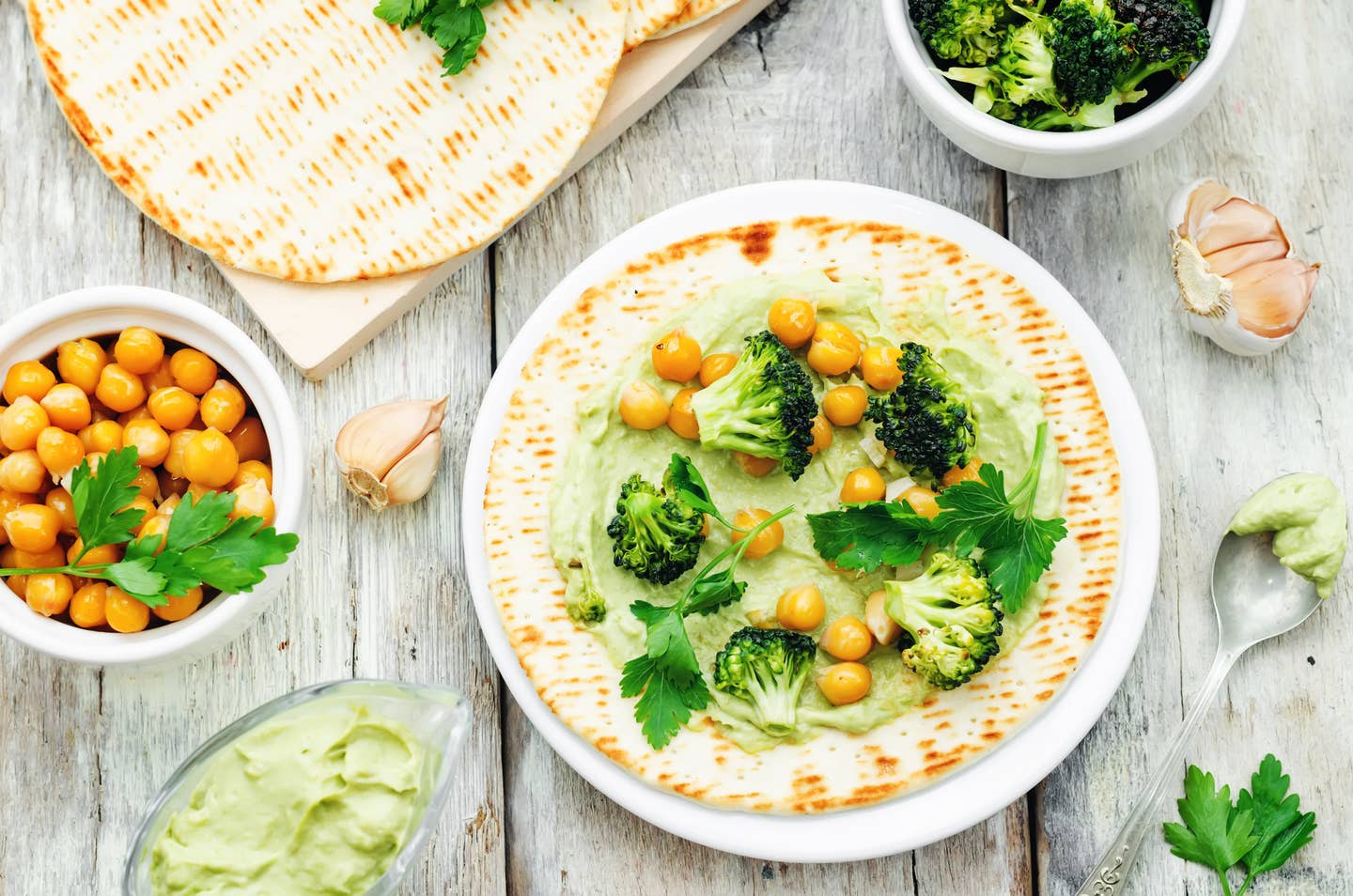
7 Best Foods to Lower Blood Sugar and Help Burn Fat
If you want to shed fat or lose weight this season, the trick is to keep your blood sugar steady, without spikes that signal the body to store fat. The way to do that is to eat whole foods that are high in fiber and turn up the engines by doing high-intensity interval training, which can help put your body in a calorie deficit. The latest trend in healthy eating for weight loss is to "eat like a diabetic" by fueling your body with whole plant-based foods, so your system runs on the calories you eat and you never have a chance to store extra calories as fat.
Nowadays the diabetes diet is getting a lot of attention because, even for non-diabetics, it's the best way to eat to lose weight and burn fat, and for anyone who is overweight, it can help to reduce or even avoid diabetes, which is more critical than ever. The American Diabetes Association estimates that approximately 88 million Americans have pre-diabetes or about 1 in 3 adults, and while there are no symptoms of pre-diabetes if left unchecked it can become full-blown type 2 diabetes, which carries with it a host of health problems that range from blindness to amputation, kidney disease, heart disease, and premature death.
Diabetes and being overweight are known risk factor for the most serious COVID-19 cases, so there is extra incentive to keep blood sugar levels steady and reduce causes of prediabetes. To stay well and shed unwanted fat right now, eating a diet that is full of high-fiber, plant-based foods with the lowest glycemic index is being touted as the best strategy by the American Diabetes Association and experts alike. The added benefit: Along with losing weight, these plant-based foods all contain antioxidants and have anti-viral, immunity-boosting nutrients that can help your body fight off infection all winter long.
The anti-diabetes diet is full of high-fiber antioxidant-rich foods
Even if you are not diabetic, and you just want to lower your fasting blood sugar and turn up your body's natural ability to burn fat, there are foods that can promote burning energy, as opposed to storing excess fuel as fat. The goal is to seek foods high in fiber and nutrients.
If you choose the right foods, get active daily, and keep your calories in check, you'll be able to lower your blood sugar levels and help your body's natural ability to metabolize the food you eat, to use energy as fuel, and not allow insulin to signal put extra calories into storage.
The key to doing this is to eat the foods that keep blood sugar levels steady, and recent studies that indicate eating high-fiber foods can work to do that. One study found that eating a small salad with a meal can keep post-prandial blood sugar from spiking, so even after eating a high-calorie meal, you can suppress blood sugar by adding fiber-filled salad greens and vegetables, since the fiber works to trick the body into absorbing calories slowly. When your body does that, it allows cells to uptake the energy and avoid a surge in blood sugar.
How to eat to keep blood sugar steady?
Eating at regular times and not snacking is recommended to keep blood sugar steady throughout the day, according to the Mayo Clinic. This helps your body avoid insulin spikes that can lead to weight gain. The other key is to choose healthy carbohydrates, that are rich in fiber, such as vegetables, whole grains (minimally processed such as brown rice), legumes such as beans, fruit, nuts, seeds, and heart-healthy fats, such as avocado.
Foods to avoid are sugary drinks, added sugars, and anything that's processed and stripped of its natural nutrient value such as white bread, regular pasta or crackers, cookies, and chips.
According to research, some foods work better than others to help your body keep blood sugar steady, including leafy greens, which have been shown to help your blood sugar stay low even after a meal.
The 7 best foods that lower blood sugar naturally and help you burn fat
1. Nuts
High in fiber and low in carbs, nuts have been shown to lower keep blood sugar steady and help reduce inflammation. According to one study on "Insulin Resistance and Cardiovascular Risk Factors," nut consumption helps lower lipids and glucose levels. The study looked at walnut oil, pistachios, and almonds and found that despite nuts being calorie-dense, they work to lower your appetite and don't lead to weight gain. They also lower your LDL or bad cholesterol and can lower A1c levels of blood sugar, which helps promote natural weight loss.
1. Chickpeas
As a legume, chickpeas are high in fiber and have a low glycemic index, so they help keep you feeling fuller longer. One study found that eating chickpeas helped lower blood glucose concentration up to 36 percent and kept you from eating as much at your next meal. Rich in vitamins C, and E and beta-carotene, chickpeas help boost digestive health, reduce LDL, and promote heart health.
3. Avocados
When you eat healthy fat, also known as unsaturated fat, your body starts burning fat for fuel and can help you keep blood sugar and insulin sensitivity low. A study followed subjects for four weeks and the group that ate monounsaturated fats (as in avocados) instead of healthy carbs saw a drop in blood lipids and stabilization in blood sugars.
"Partial replacement of complex digestible carbohydrates with monounsaturated fatty acids (avocado as one of its main sources) in the diet of patients with non-insulin-dependent diabetes improves the lipid profile favorably, maintains an adequate glycemic control, and offers a good management alternative."
Despite the fact that avocados have 240 calories in an average-sized avocado, there's no better food to keep weight under control than avocados. One study found that people who eat avocado daily have lower BMIs than those who don't. So the research suggests if you want to lower blood sugar and help maintain a healthy weight, eat half an avocado daily.
4. Squash
Now that fall is in full swing, pumpkin and other types of squash are readily available at farm stands and the produce aisle. One study found that pumpkin can help lower blood sugar and Grab several flavors and make a ratatouille with eggplant and tomato and onion for the whole family will enjoy Squash has been found to lower insulin levels and help fight obesity.
5. Leafy Greens
Kale is a diet superhero, but so are spinach and other dark leafy greens. Specifically, they have been shown to lower post-prandial blood sugar, so adding leafy greens to your meal is always a good idea, even if it means finding creative ways to add kale and spinach to pasta or another high-carb dish.
One study found that kale can help control blood sugar even with no other changes in diet or exercise. The idea that kale and greens can be used instead of medicine helped in "developing the concept of dietary control of hyperglycemia," or controlling high blood sugar through dietary changes.
Low in calories and high in fiber, nutrients, and phytochemicals, kale, spinach, and other leafy greens will help you lower blood sugar and provide vitamin C and antioxidants that boost metabolism and help provide immunity.
6. Broccoli
If there is one food to eat on repeat it's broccoli, for the special compound called Sulforaphane that gets released when a bug-- or a human-- bites into it, and the same bug killer in the garden kills germs and infections in your body. For lowering insulin, broccoli has been shown to reduce that plus other conditions related to diseases. It's full of antioxidants, vitamin C, and magnesium, so eat as much as you like.
7. Strawberries
In the fight for which berry is best for you – blue or straw – it's pretty much a draw. But strawberries are rich in antioxidants that have been proven in the lab to lower insulin levels, as well as cholesterol, and help fight obesity. Studies show that eating at least 2 to 3 servings of strawberries a week can lower the risk of developing type 2 diabetes. Another study found that eating one cup of strawberries along with regular sugar reduced the blood glucose spike from the sugar. Meanwhile, strawberries contain fiber that keeps you feeling fuller longer. We say why not add all the berries to your smoothie or cereal? Or just eat them by the handful as a snack.
As a bonus to help your body regular blood sugar, drink plenty of water since your blood volume depends on not getting dehydrated which can be easy, even in colder weather or just sitting at your desk.
Bottom Line: Eat high fiber foods to keep blood sugar steady
Foods that help regular blood sugar like leafy greens and other high fiber foods can help you burn fat and maintain a healthy weight, which is vital for overall health and wellbeing. One way to do this is to follow the "diabetes diet" guidelines and focus on whole plant-based foods.
More From The Beet






